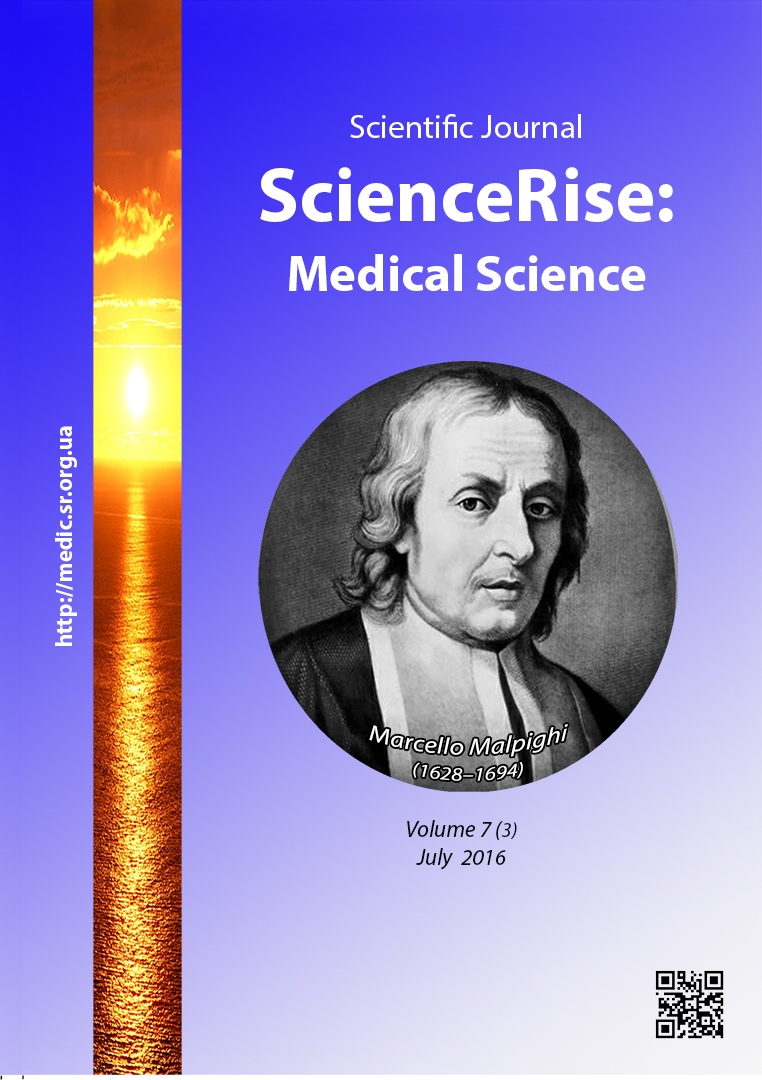Ризик токсоплазмозного енцефаліту у ВІЛ-інфікованих пацієнтів з різним серологічним профілем протитоксоплазмових антитіл
DOI:
https://doi.org/10.15587/2519-4798.2016.74318Ключові слова:
ВІЛ-інфекція, поширеність токсоплазмозу, серологічний профіль антитіл до токсоплазм, ризик токсоплазмозного енцефалітуАнотація
Під трирічним спостереженням перебували 931 ВІЛ-інфікованих осіб. Вивчено ризик захворюваності на токсоплазмозний енцефаліт в когорті серопозитивних на токсоплазмоз (531) і когорті серонегативних (395) осіб. У серопозитивних захворюваність на токсоплазмозний енцефаліт становила 4,16 %, що в 6 разів більше, ніж в когорті серонегативних. Найвища захворюваність була в групі пацієнтів із серореверсією (21,43 %)
Посилання
- Flegr, J., Prandota, J., Sovičková, M., Israili, Z. H. (2014). Toxoplasmosis – A Global Threat. Correlation of Latent Toxoplasmosis with Specific Disease Burden in a Set of 88 Countries. PLoS ONE, 9 (3), e90203. doi: 10.1371/journal.pone.0090203
- Furtado, J., Smith, J., Belfort, R., Gattey, D., Winthrop, K. (2011). Toxoplasmosis: A global threat. Journal of Global Infectious Diseases, 3 (3), 281. doi: 10.4103/0974-777x.83536
- Jones, J. L. (2001). Toxoplasma gondii Infection in the United States: Seroprevalence and Risk Factors. American Journal of Epidemiology, 154 (4), 357–365. doi: 10.1093/aje/154.4.357
- Popovich, O. O. Moroz, I. V, Chabanov, F. A. (2011). Toxoplazmoz (analiz fundamentalnikh danykh) [Toxoplasmosis (analysis of fundamental data)]. Novosty mediciny i farmacii, 5 (356). Available at: http://www.mif-ua.com/archive/article/16333
- Zaporozhan, V. M., Aryayev, M. L. (2004). HIV and AIDS. Kyiv: "Zdorovia", 636.
- VIL-infekcia v Ukraini. Buleten № 44 [HIV-infection in Ukraine. Newsletter number 44] (2015). Kyiv, 37. Available at: http://ucdc.gov.ua/uploads/documents/c21991/2b87e22809b7504610e7583b934cf583.pdf
- C. Hoffmann, J. K. Rockstroh (Eds.) (2012). Cerebral toxoplasmosis. HIV 2012/2013. Medizin Fokus Verland, Hamburg, 740, 345–350. Available at: http://www.hivbook.com
- Klinichnyi protocol diagnostyky i likuvannia oportunistychnykh infekcij i zahalnykh symptomiv u VIL-infikovanykh doroslykh ta pidlitkiv [Clinical protocol for diagnosis and treatment of opportunistic infections and general symptoms in HIV-infected adults and adolescents] (2007). MOZ Ukrayiny, 182, 45. Available at: http://ucdc.gov.ua/uploads/documents/5416f7/5e383386d320c87999c2801c80fcdcd8.pdf
- Klinichnyi protocol antyretrovirusnoi terapii VIL-infekcii v doroslykh ta pidlitkiv [Clinical protocol for antiretroviral treatment of HIV infection in adults and adolescents] (2010). MOZ Ukrayiny, 551, 189. Available at: http://ucdc.gov.ua/uploads/documents/17d68b/b5fdd660e1cf98ee0b35bd1e43fd482f.pdf
- Hryzhak, I. H. (2014). Laboratorna diahnostyka cerebralnoho toxoplasmozu [Laboratory diagnostics of cerebral toxoplasmosis]. Infekcijni khvoroby, 1, 46–50.
- Moskalenko, V. F., Gulchiy, O. P., Golubchikov et. al; Moskalenko, V. F. (Ed.) (2009). Biostatistics. Kyiv: Book Plus, 184.
- Seromonitorynh toksopolazmozu u VIL-infikovanykh zhinok [Seromonitoring Toxoplasmosis in HIV-infected women] (2009). Associated infectious and parasitic diseases. Ternopil: TSMA, 55–57.
- Xiao, Y., Yin, J., Jiang, N., Xiang, M., Hao, L., Lu, H. et. al. (2010). Seroepidemiology of human Toxoplasma gondii infection in China. BMC Infectious Diseases, 10 (1). doi: 10.1186/1471-2334-10-4
- Osunkalu, V., Sulaimon A., Onyiaorah, I., Nkolika, O. (2011). Seroprevalence of Toxoplasma gondii IgG antibody in HIV-infected patients at the Lagos University Teaching Hospital. HIV/AIDS – Research and Palliative Care, 101. doi: 10.2147/hiv.s15532
- Gutiérrez, M., Soriano, V., Bravo, R., Vallejo, A., Gonzalez-Lahoz, J. (1994). Seroreversion in Patients with End-Stage HIV Infection. Vox Sanguinis, 67 (2), 238–239. doi: 10.1111/j.1423-0410.1994.tb01669.x
- Zaaijer, H. L., Bloemer, M. H., Lelie, P. N. (1997). Temporary seronegativity in a human immunodeficiency virus type 1-infected man. Journal of Medical Virology, 51 (1), 80–82. doi: 10.1002/(sici)1096-9071(199701)51:1<80::aid-jmv12>3.3.co;2-l
##submission.downloads##
Опубліковано
Як цитувати
Номер
Розділ
Ліцензія
Авторське право (c) 2016 Ігор Гнатович Грижак

Ця робота ліцензується відповідно до Creative Commons Attribution 4.0 International License.
Наше видання використовує положення про авторські права Creative Commons CC BY для журналів відкритого доступу.
Автори, які публікуються у цьому журналі, погоджуються з наступними умовами:
1. Автори залишають за собою право на авторство своєї роботи та передають журналу право першої публікації цієї роботи на умовах ліцензії Creative Commons CC BY, котра дозволяє іншим особам вільно розповсюджувати опубліковану роботу з обов'язковим посиланням на авторів оригінальної роботи та першу публікацію роботи у цьому журналі.
2. Автори мають право укладати самостійні додаткові угоди щодо неексклюзивного розповсюдження роботи у тому вигляді, в якому вона була опублікована цим журналом (наприклад, розміщувати роботу в електронному сховищі установи або публікувати у складі монографії), за умови збереження посилання на першу публікацію роботи у цьому журналі.










